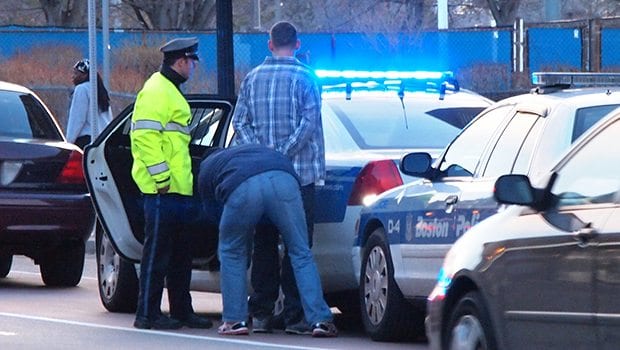
The criminal justice reform bill that Gov. Charlie Baker signed into law last week would not likely have been possible in the year 2000 when Massachusetts voters rejected a measure that would have diverted defendants caught with small amounts of drugs to treatment programs rather than jails.
One undeniable difference between the get-tough-on-crime attitude that prevailed 18 years ago and the current push for rehabilitation and redemption is the changing face of addiction.
The national opioid crisis hit whites in Massachusetts particularly hard, racking up a considerable death toll and, at the same time, altering public perceptions, opinions and even the language used to describe addiction, crime, punishment and recovery. The opioid overdose death rate of blacks, who make up 8.8 percent of the state’s population, was 15.4 percent per 100,000 in 2016. The death rate for whites was more than twice that at 35.9 per 100,000. The disproportionate number of whites affected by opiate addiction and deaths has been a prime factor in the changes to public perception.
In 2000, what was then called substance abuse was considered a black and Latino problem. Today, it’s whites who are caught in the grips of what policy makers now refer to as “substance misuse disorder.”
“Unfortunately, now that white people are doing drug crimes, there’s a lot more energy to reform the criminal justice system,” noted activist Calvin Feliciano. “If it was just us, nothing would have happened.”
Feliciano’s assertion is backed up by a study published in 2014 by The Sentencing Project, a Washington, D.C.-based criminal justice reform advocacy group, which found that whites strongly associate blacks and Latinos with crime and criminality. While a majority of blacks oppose the death penalty and Latinos are split, a majority of whites in the United States support capital punishment.
Whites’ attitudes toward blacks and crime, fueled by news media and popular culture representations of blacks as criminally-inclined, plays a major role in their support for punitive policies, the report authors found.
“White Americans who associate crime with blacks and Latinos are more likely to support punitive policies — including capital punishment and mandatory minimum sentencing – than whites with weaker racial associations of crime.”
In 2000 blacks and Latinos overwhelmingly supported Ballot Question 8, with its provisions for treatment on demand as an alternative to incarceration. But with less than 20 percent of the state’s population, the strong support of blacks and Latinos was insufficient to sway the vote.
That same year, a ballot measure denying convicted felons from voting while serving time did pass, underscoring the get-tough-on crime mentality of the pre-opioid crisis electorate.
The attitudes white Massachusetts residents harbored toward addiction and crime mirrored national trends. In 1994, then-President Bill Clinton signed into law a bill that created stiffer penalties for dealing crack cocaine, a form of the drug that was used in black and Latino neighborhoods.
But after 2000, as white suburbanites took to hard drugs, those punitive attitudes softened. Decades after jazz singer Billie Holiday called for treating addiction as a disease, rather than a crime, many police departments in the state no longer arrest addicts.
A major factor has been the staggering death tolls: The opioid crisis claimed 1,977 lives in Massachusetts last year. As deadly as heroin is, the synthetic opioids Fentanyl and carfentanil are even more so.
While heroin and crack cocaine were concentrated mainly in working-class black and Latino neighborhoods in Boston, Springfield, Lawrence and other Massachusetts cities, the current crisis has pushed addiction into communities represented by all or nearly all of the majority white legislators on Beacon Hill.
“It’s now more widespread among the white working class and middle class,” noted Massachusetts Community Action Network Executive Director Lew Finfer.
Racial animus may have informed the mandatory minimum sentences in Massachusetts in decades past, but those get-tough-on-crime attitudes are now melting away under the de facto general amnesty for low-level drug crimes and effective decriminalization of drug use.
The evolving attitudes towards drug use and recovery present somewhat of a silver lining on the crisis for blacks who were disproportionately targeted during the rush to lock up low-level offenders in the past.
“The resources in the Criminal Justice Reform Act will come to people of color, even though it should have come earlier,” Finfer said.






